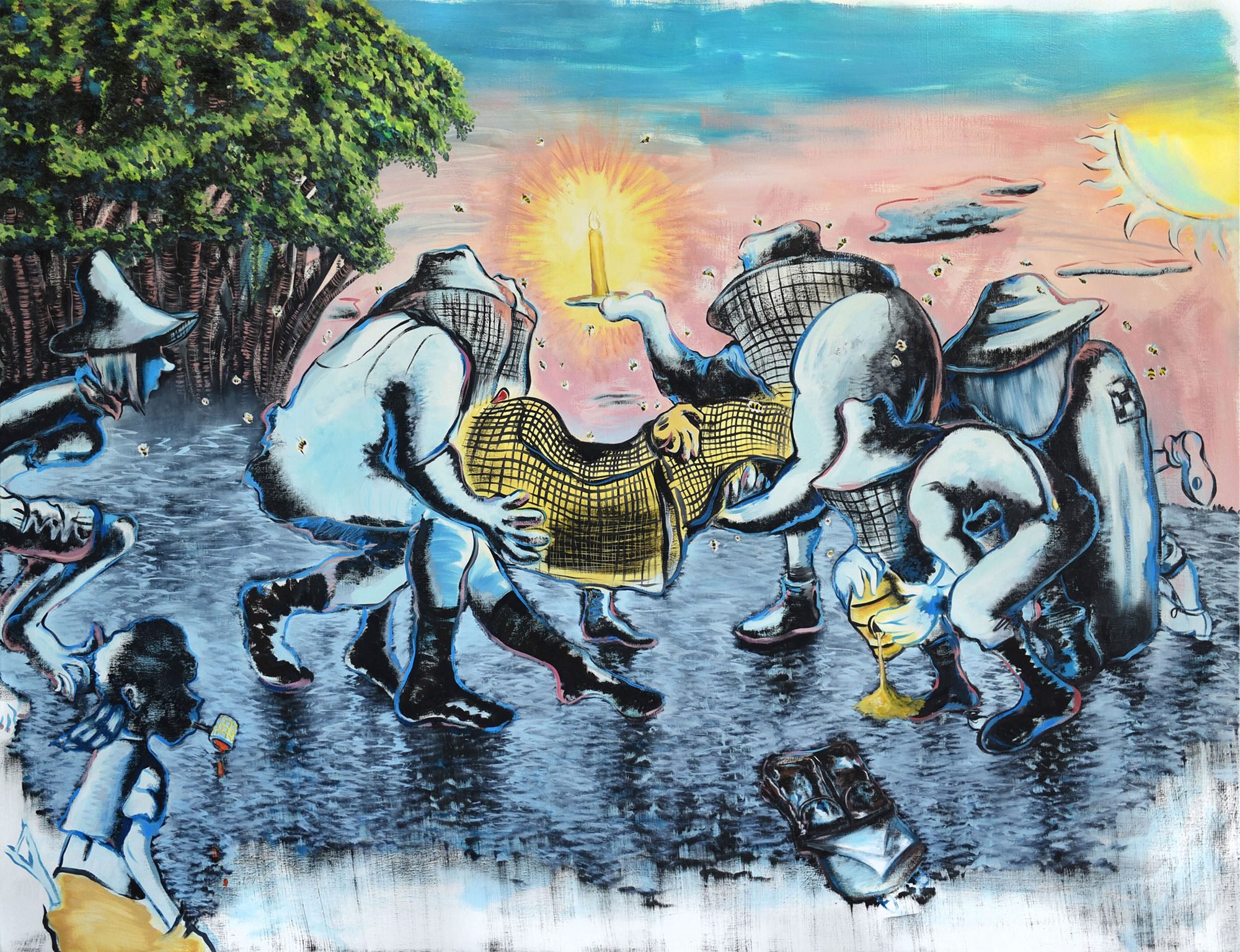Issue 6 Artist Spotlight | Seth Ellison
C+B: Tell us about yourself, Seth!
SE: Since completing my MFA in 2012, I essentially disappeared from the scene for roughly a decade. Some have coined it as the '10 years of silence' — a period during which I withdrew into seclusion to discover what my art was all about. During that period, I married, became a father, and stumbled into professional writing, which remarkably enriched my artistic journey by enabling me to work from home and remain in close proximity to my studio. While in school, I crafted trendy minimalist light sculptures. However, it was during my post-graduation extended period of seclusion that I unearthed a deep affection for painting and my native West Virginia, which now serves as a wellspring of inspiration for my art.
C+B: How has your relationship with your work changed since you first started creating?
SE: It never stops changing. Painting is the best game I've ever played, and this is partially because of the near-infinite amount of moves that can be made in between a square. In an instant, everything can unravel, or it can be elevated in beauty and meaning.
C+B: What has your experience been like receiving feedback or criticism of your work?
SE: Some galleries have shown reservations when it comes to certain socio-political symbolism in my work. This may be due to the negative connotations associated with the South's history – which is somewhat understandable. One gallery even went as far as to say, 'We don't need another Dana Schutz moment.' However, it's crucial to understand that the messaging in my work stems from my own lived experiences. Over time, I've grown more acutely aware of the profound impact that specific symbols can carry and how their mere depiction is sufficient to allude to the troubled history of a place's past transgressions.
With that said, I welcome a range of opinions, both positive and negative. Just as you wouldn't have the desire to jump into a pool or engage in a snowball fight if the temperature remained a constant 72 degrees, criticism is a vital aspect of artistic growth, and it should be received with grace. It's important, however, to keep in mind that art, by its very nature, is subjective. I've received numerous pieces of advice regarding what I 'should' do, but I view this feedback as an exploration of what I 'could' do. Ultimately, the decisions made in your studio are your own, and you hold the roles of judge, jury, and executioner.
C+B: Which creator (present day or in the past) do you most admire and why? What draws you to their work?
SE: While my artistic style differs significantly from his, I've always held a profound admiration for Cy Twombly. In fact, '50 Days at Iliam,' which is housed at the Philadelphia Museum of Art, stands out as perhaps my favorite series of his work. The shapes and forms within his paintings seem to operate on their own unique plane of physics. A green blob can effortlessly shift between states of liquid, solid, gas, and the metaphysical. Twombly undertook a formidable challenge in making the inexplicable his subject, and even today, his works continue to provoke immediate controversy with their seemingly audacious nature.
Find and support Seth here:
IG: @sethellison101
Website: sethellison.com
(Summoning of the Bee Keepers, 74’’ x 56’’, oil on canvas, ©Seth Ellison)
My ideal creative retreat would be: A large, empty, secluded warehouse-sized underground bunker with great lighting and supplies delivered daily. Oh, and a foldout chair.
One word that describes my most recent work is: Delirious
A quote that inspires me is: Philip Guston once said, "When you're in the studio painting, there are a lot of people in there with you - your teachers, friends, painters from history, critics... and one by one if you're really painting, they walk out. And if you're really painting YOU walk out."
Honestly, every time I read that quote my heart drops because it lays bare a deeply hidden truth about being an artist. It gives the game away and it's shocking for me to see it, akin to God exposing his face. Only Guston, a man who mixed his blood with titanium white, who wasn’t afraid to journey to the edge, could come back with that.
My hope for those viewing my work: I hope that people take away a piece of me and it becomes a part of them.



